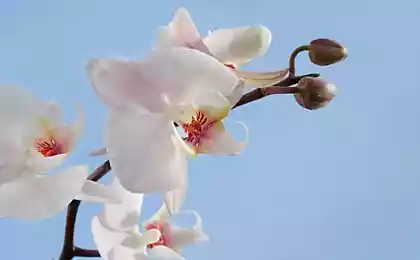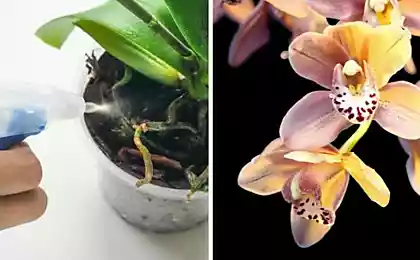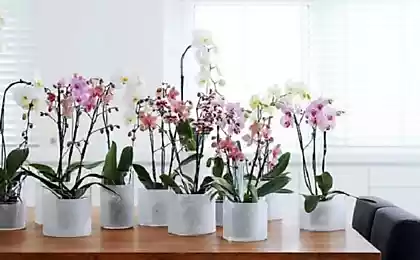420
How to care for orchids

You become the owner of the orchids? Now are in turmoil as to take care of it?
Just a few simple tips and favorite flower will delight You with their blooms.
In nature Phalaenopsis grow on trees in the shade of their crowns, with the roots they cling to the trunk, are powered by decaying particles of wood, they absorb water from the wet surface of the wood. So some of the oddities of the flower becomes perfectly intelligible.
Of course, Orchid is an unusual flower. It does not need soil, frequent watering, it is in dire need of fertilizing. But if you will properly care for her, she quickly you will appreciate the long flowering and succulent green leaves.
1. PHALAENOPSIS LIKES FILTERED SUNLIGHT
So put a pot of flower is better on the North windowsill, in other cases at some distance from the window to him during the day did not fall to direct sunlight. Usually requires 12-16 hours of light a day, so if you do not want in the winter, the flower went into a period of rest (at this time it does not bloom), it makes sense to dosvechivat his luminous lamp (it is not heated, which is very important).
2. TO GROW PHALAENOPSIS SHOULD BE IN A CLEAR POT WITH HOLES.
The roots of the plants fotosintesis, they definitely need light for normal growth and development. In opaque pots Phalaenopsis quickly stunted and may die. The exception may be pots made from coconut fibers, but in my experience the usual plastic much more practical and easier watering.
3. PHALAENOPSIS DO NOT NEED SOIL
As a rule, the flower is sold in a container with pine bark is the best Foundation for the flower. On the bottom between the roots and stacked the larger pieces so that the plant could rely on, the rest of the place covered with smaller crushed pieces.
The bark absorbs and slowly releases moisture — this is what the plant is required.
If you want to prepare the substrate on their own, that bark is better to take with fallen in the forest of pines, it should be durable — not rotten, not contain tar, no signs of insect infestation. Its a short boil in water for 10-15 minutes and dried in the oven. Fortunately, sales has already appeared on the bark, which facilitates the task of cultivation.
The other components of the substrate are charcoal, sphagnum moss, vermiculite, expanded clay and peat.
Flower watering is required once every 7-10 days in the summer — more often — every 3-4 days. Here, too, has its own peculiarities. The pot should be immersed in nahorodny(room temperature) water (convenient to do it in a small basin), it must reach a height of half the pot. Due to the openings contained in the walls of the pot, the bark will quickly saturate with moisture. I put the Phalaenopsis in water for 10-12 hours. And only in the morning, in the evening may affect the temperature decrease and the water becomes noticeably colder and the plant has all chances to get sick.
After 12 hours, remove the pot from the water and put it in the pan, over night, the excess water will go, it should be buried.
Never water the Phalaenopsis on the leaves and even if by chance they are damp — wipe gently with a cloth, make sure that the water would not flow into the sinus, this may be a rotting leaf.
To understand when your plants need watering, follow the turgor of the leaves, too frequent irrigation leads to the appearance of cracks on the sheet, and too rare — to its shrivelling, withering.
FEEDING
In commercially available solutions of special fertilizer for orchids, which is very convenient. The main rule is never to fertilize a flower with a dry substrate. First it is soaked (as described above) for a couple of hours, then the plant is removed, and a basin of water add fertilizer. Again put the bowl in the water with fertilizer and leave for the allotted time(8-10 hours). Then — just like with an ordinary watering — take out — put in pan — drain off excess water and so on until the next watering.
Repeated feeding frequency of watering, so just fertilize my orchids at every watering in the summer — 2 times a week, other times — once in 7-10 days. Fertilize cease only if the Phalaenopsis left in peace and not bloom. This happens in the winter.
I want to clarify that all of the above suggestions work for healthy plants. If for some reason your plant is sick, it makes sense to familiarize with the special literature, which is a lot on offer on the web, or consult in a flower shop.
Don't be afraid to buy the orchids are beautiful and quite undemanding plants, they are exotic and graceful and are sure to become the highlight of your home flower collection.
Source: www.myjane.ru/articles/text/?id=11411























